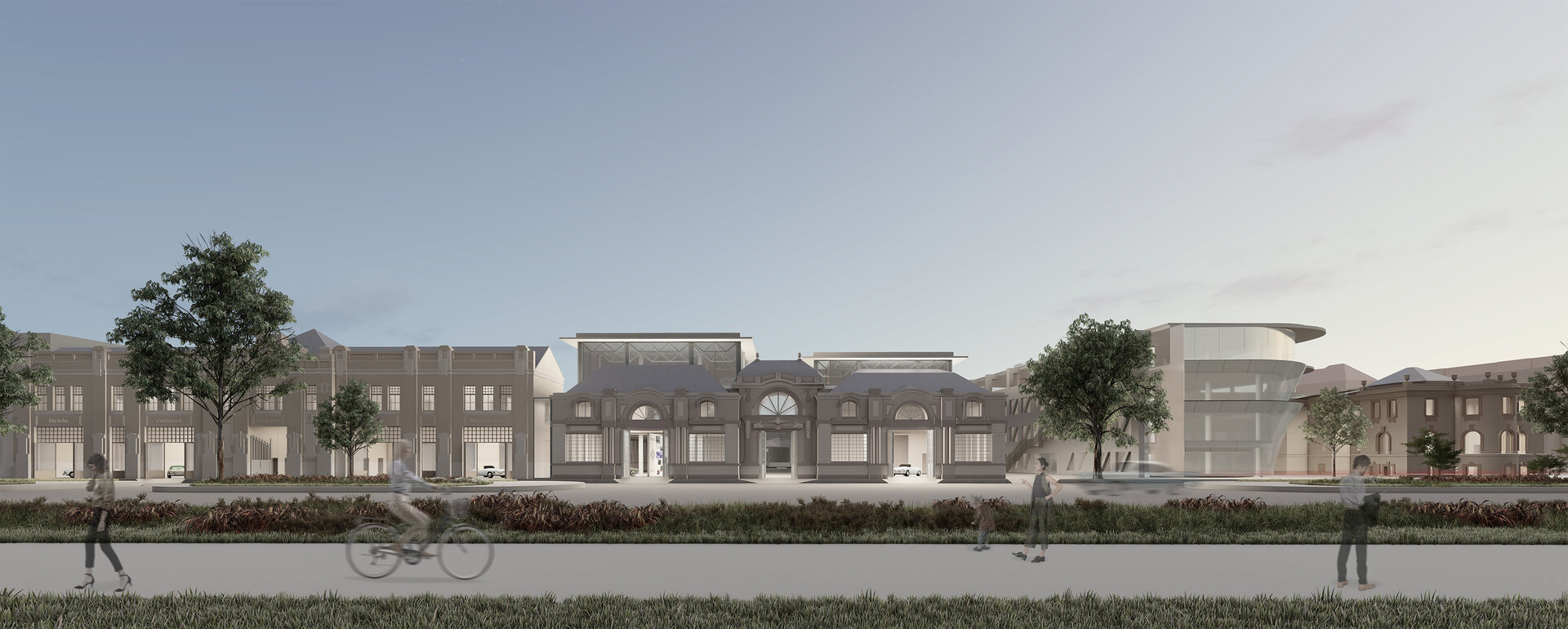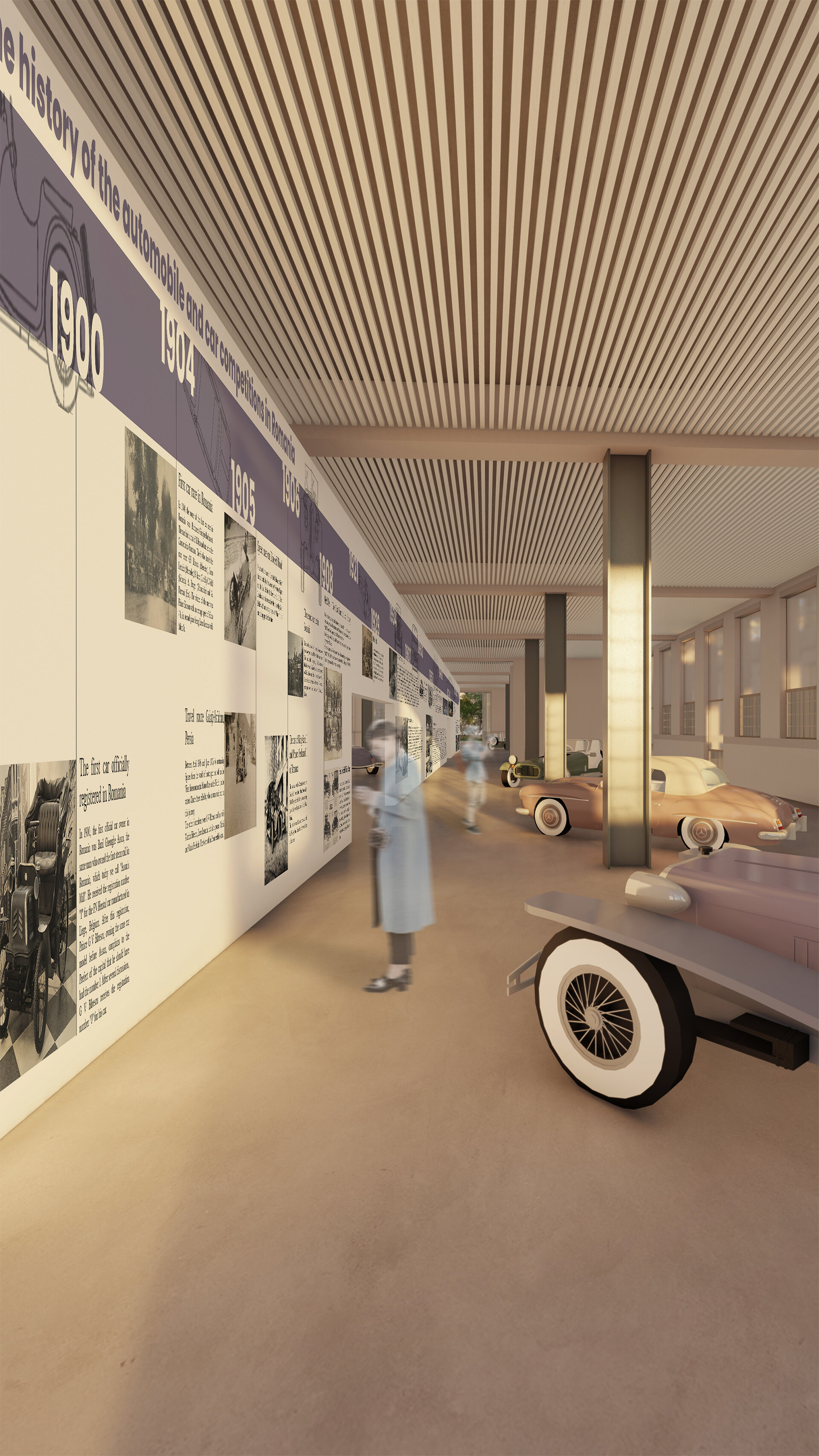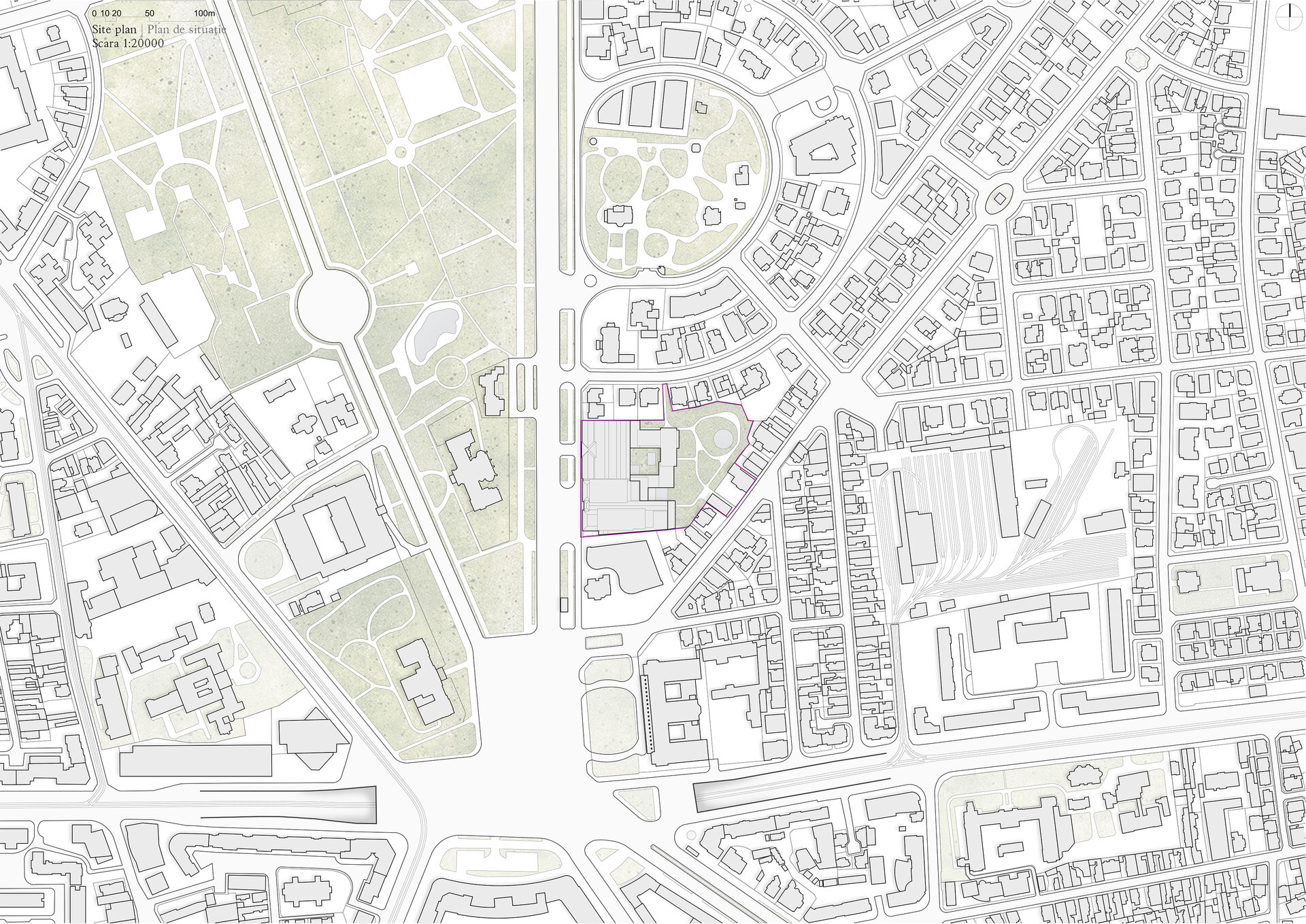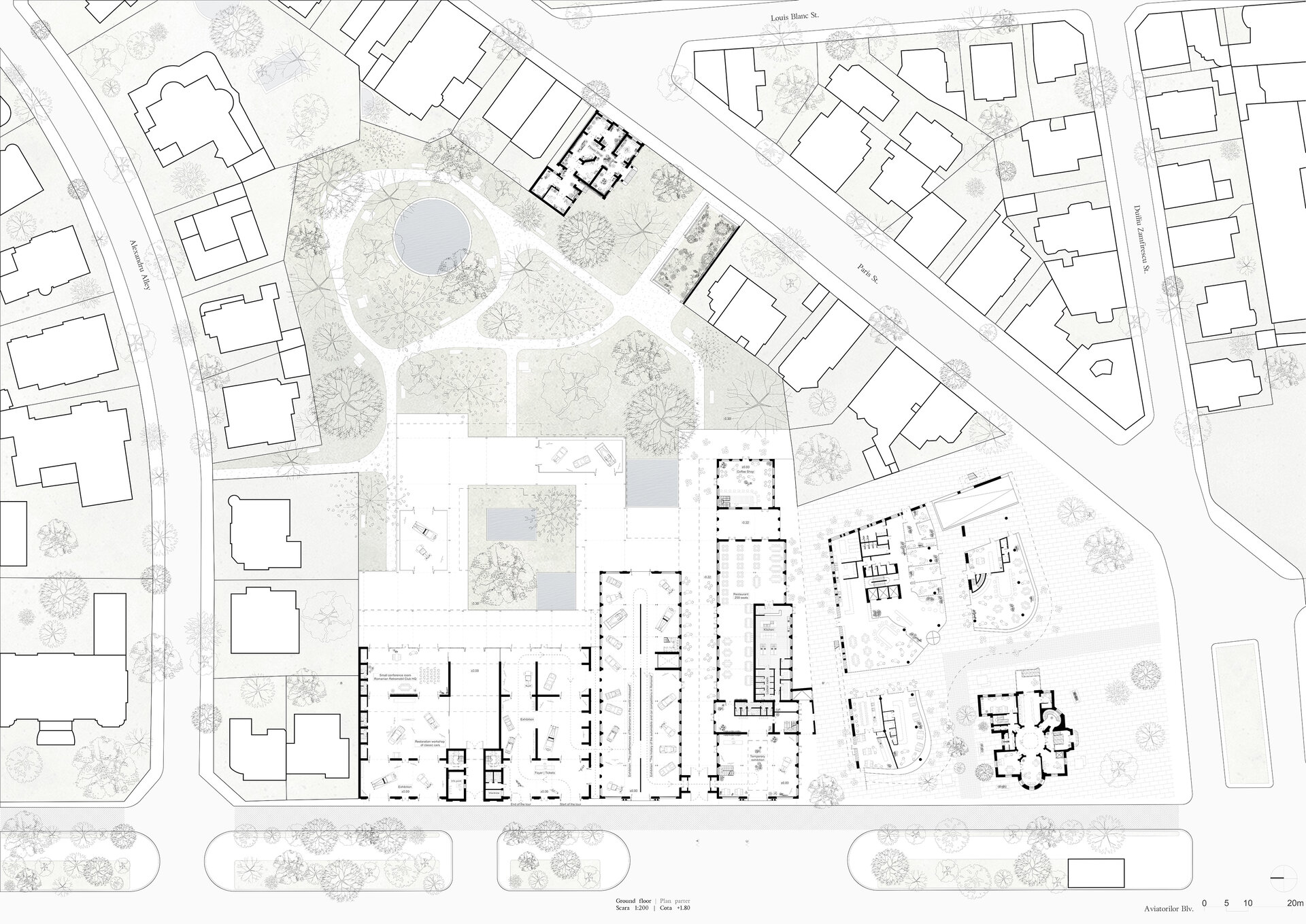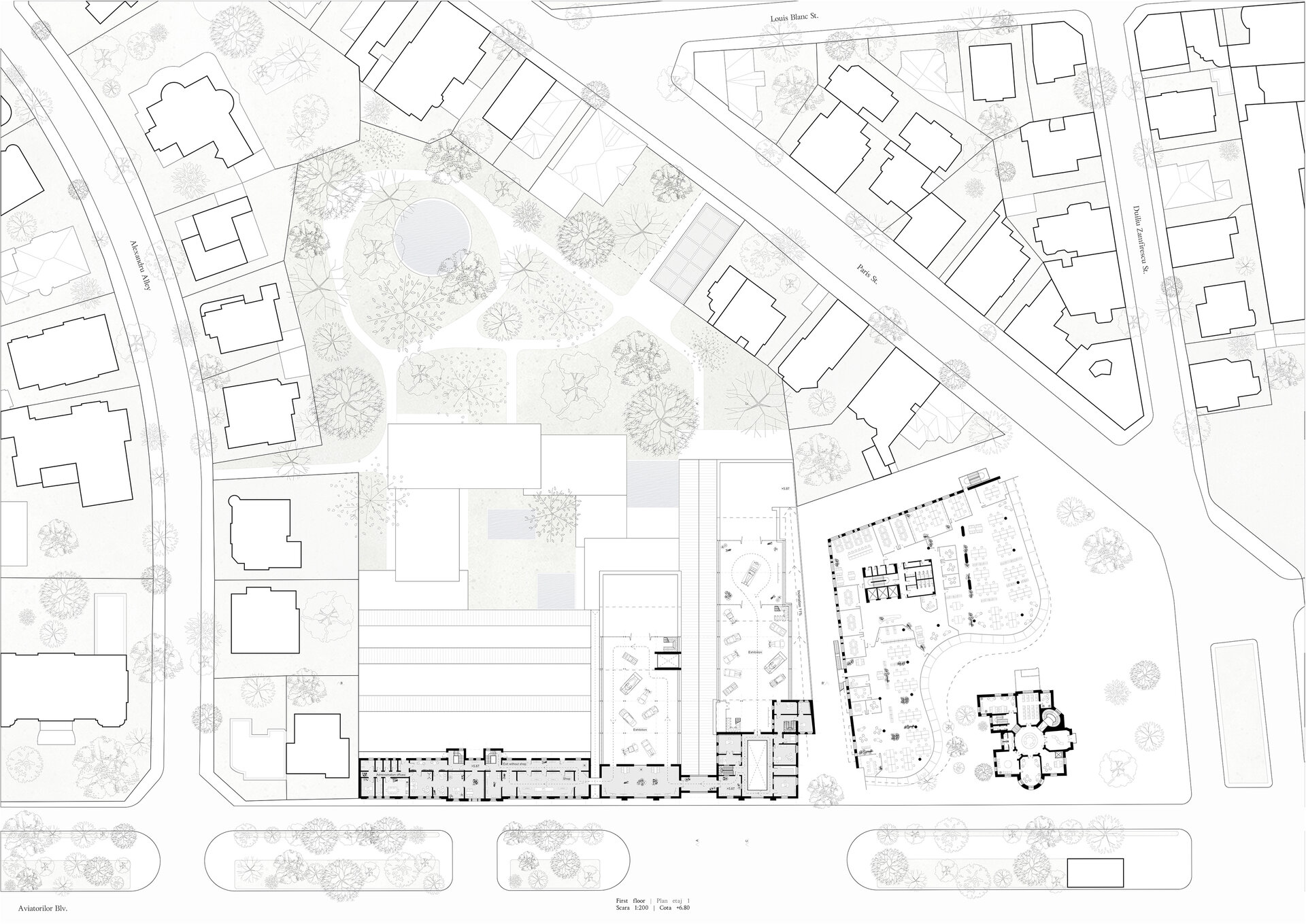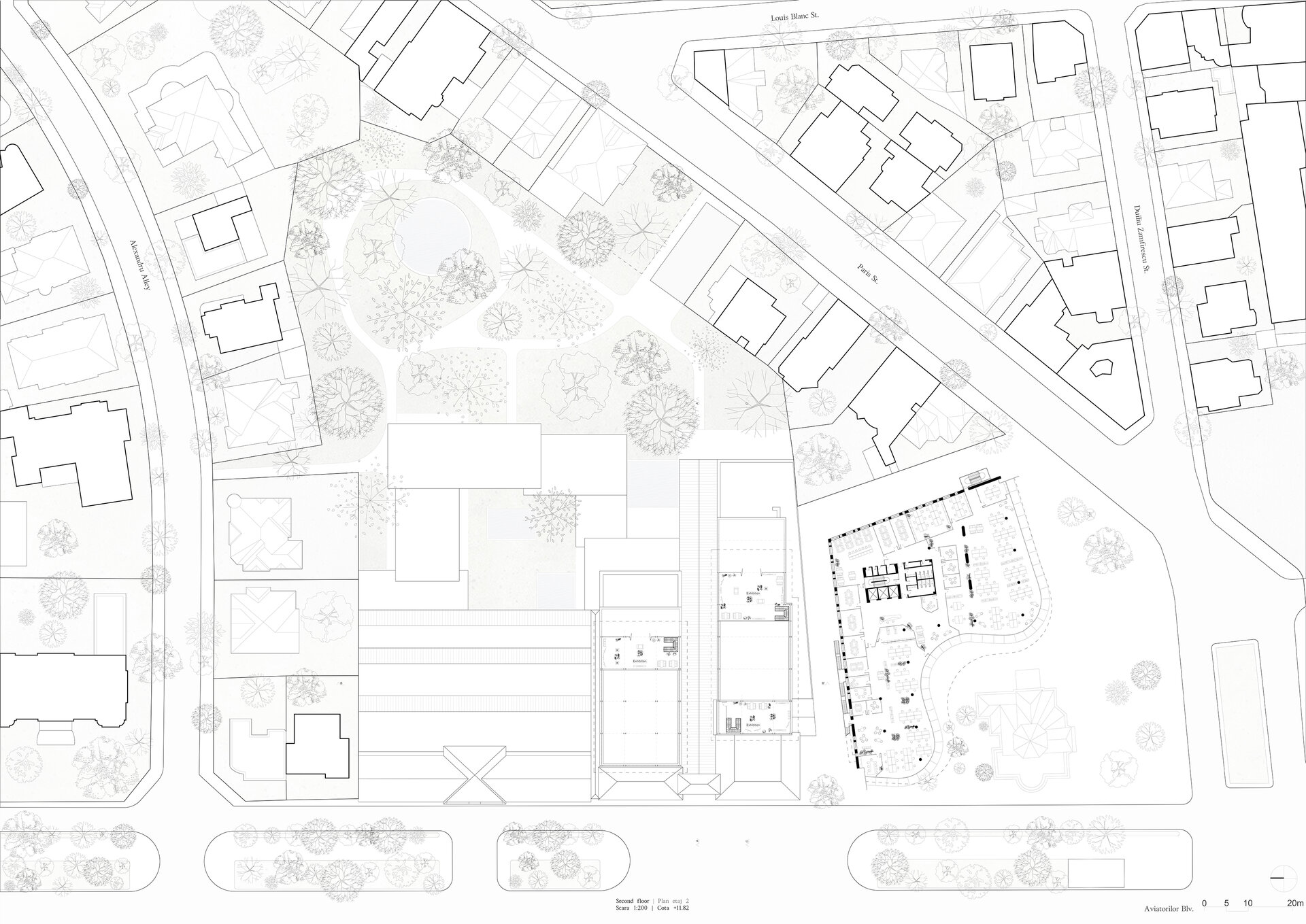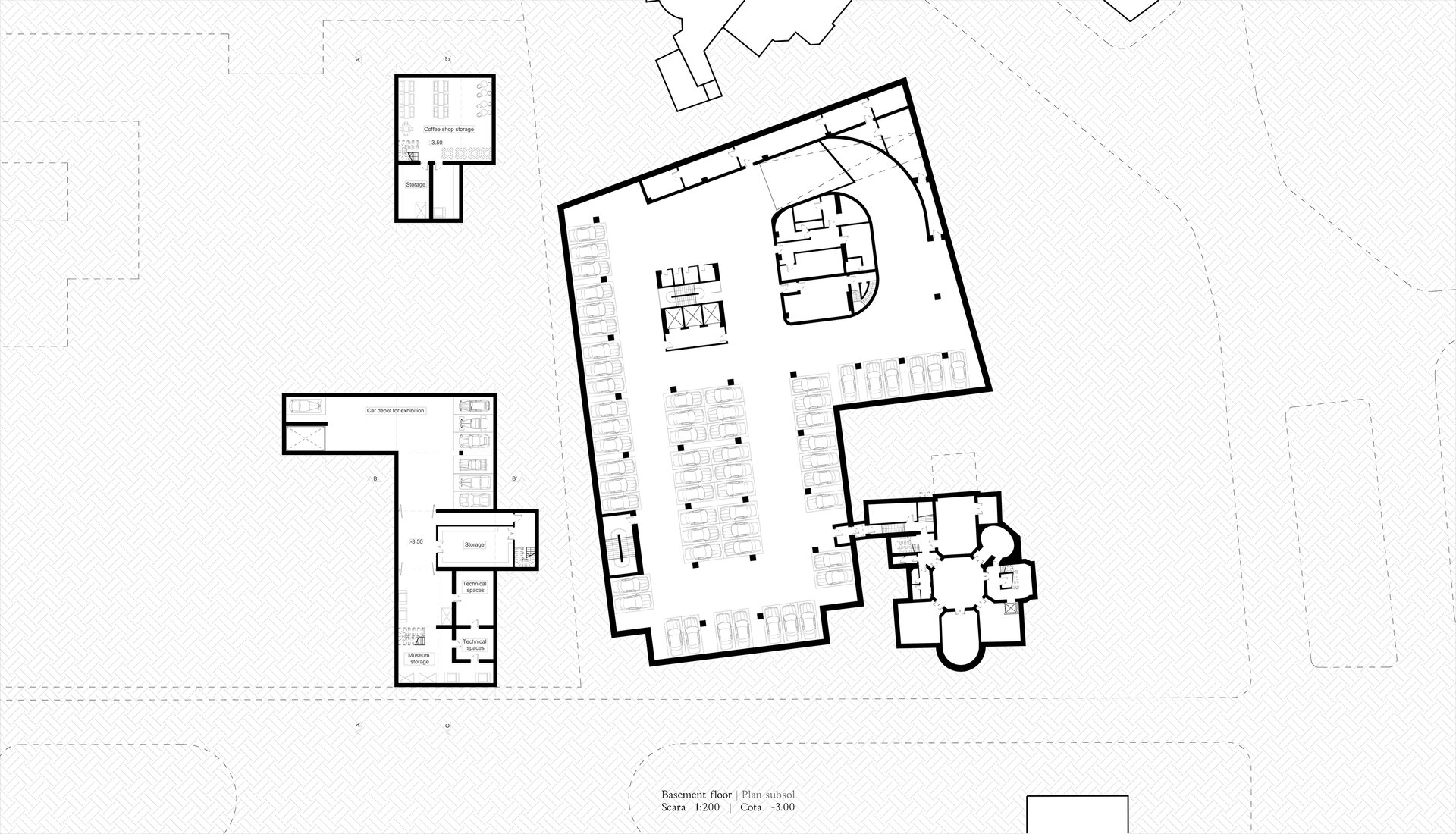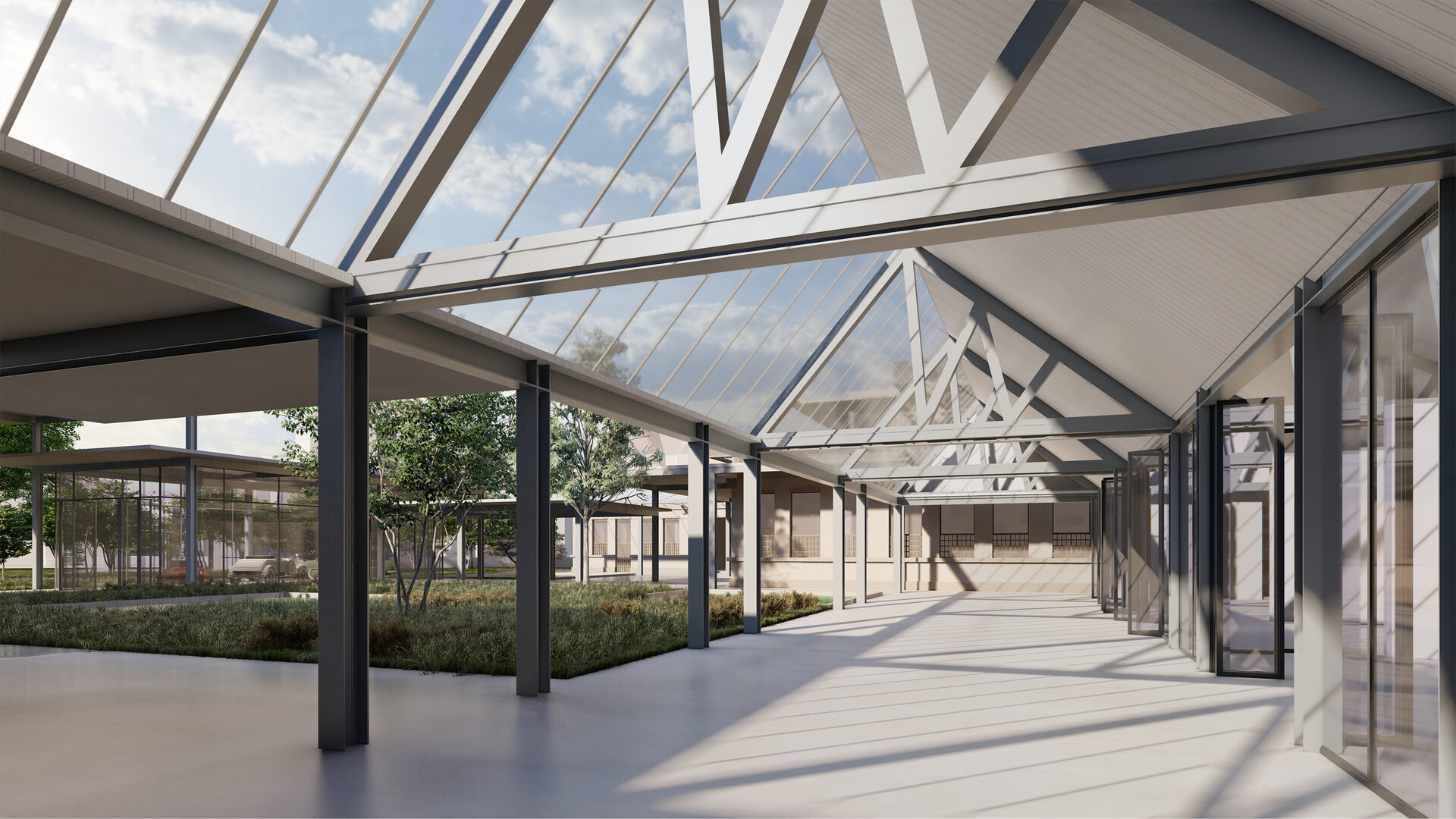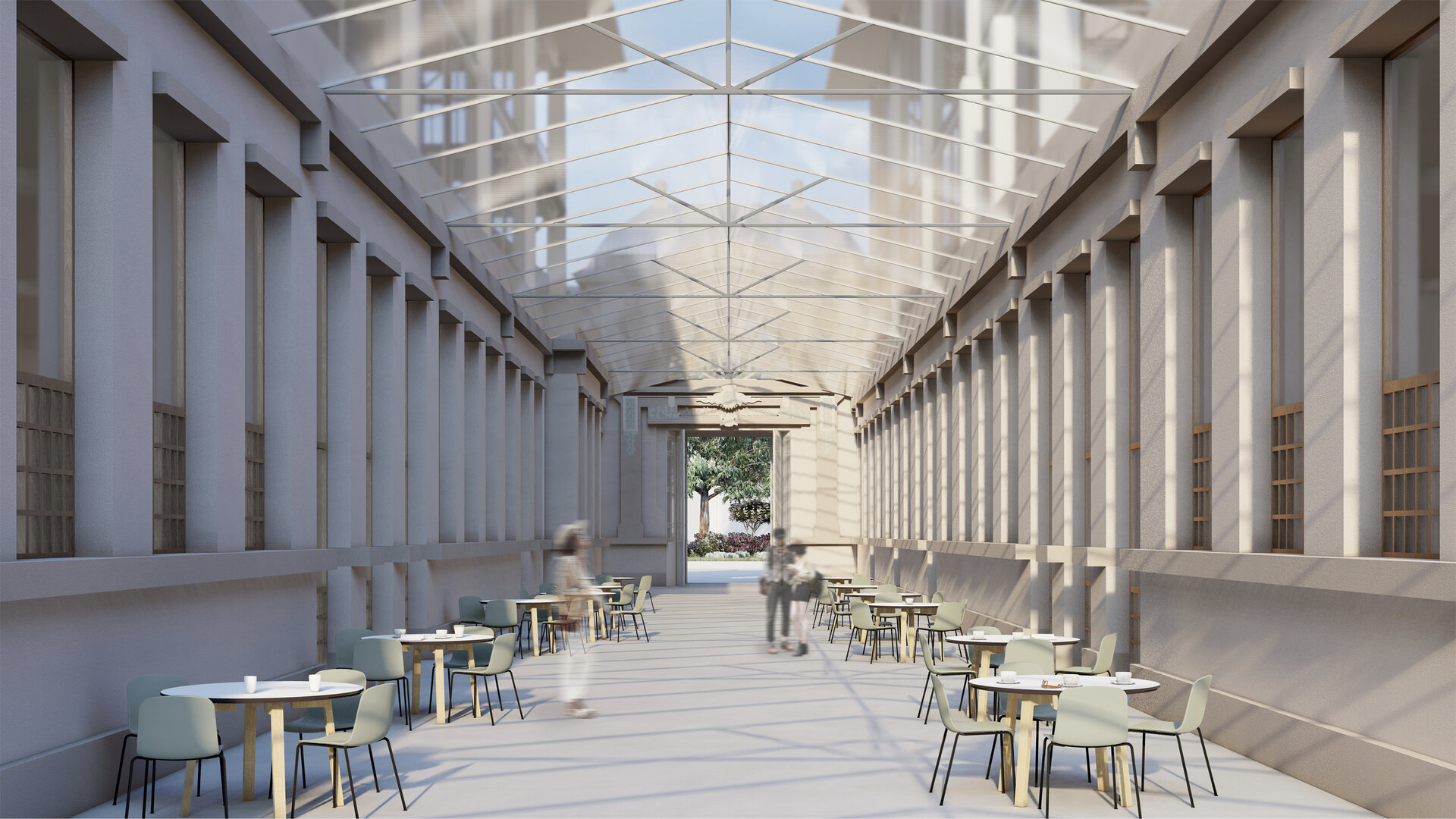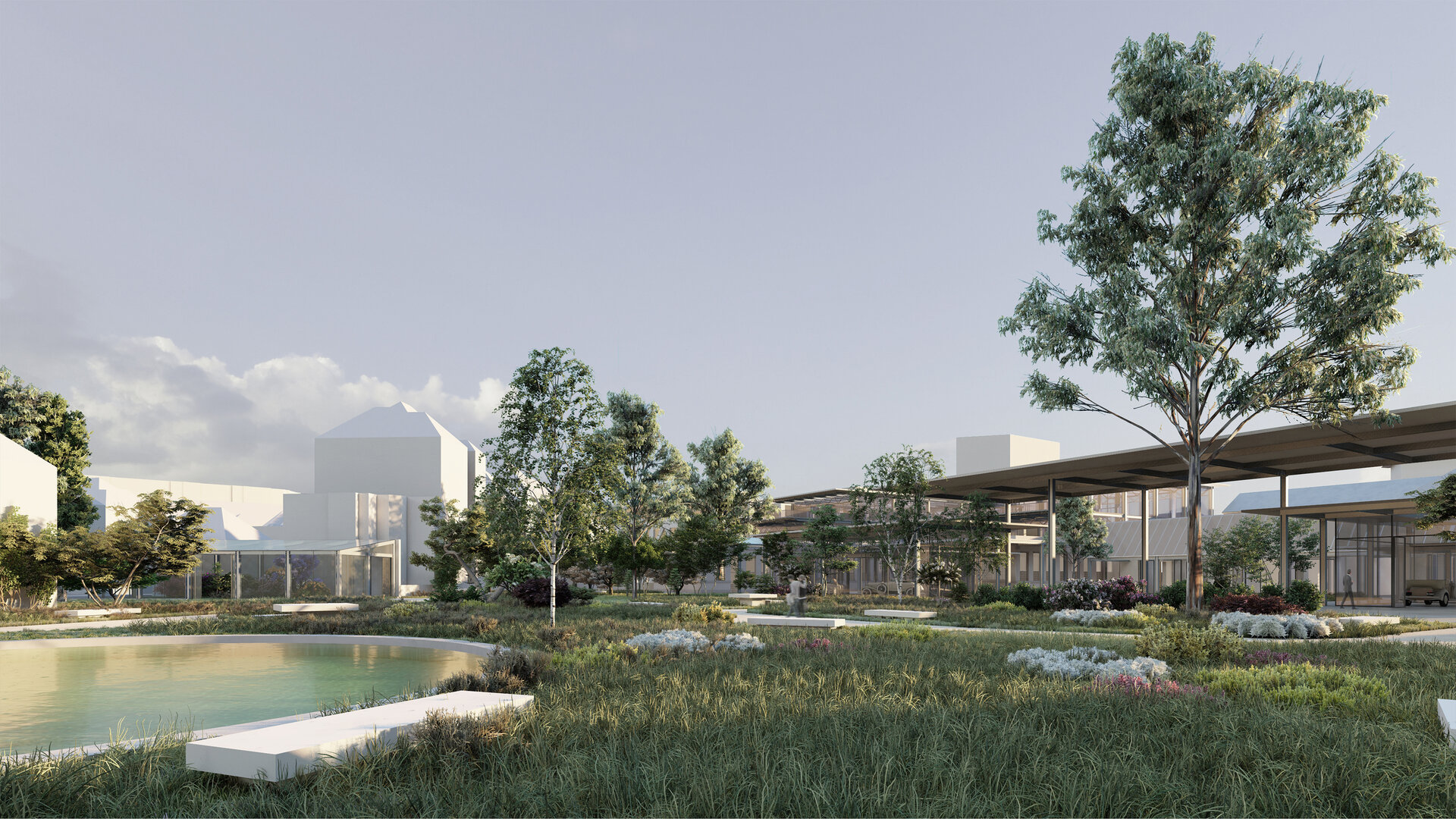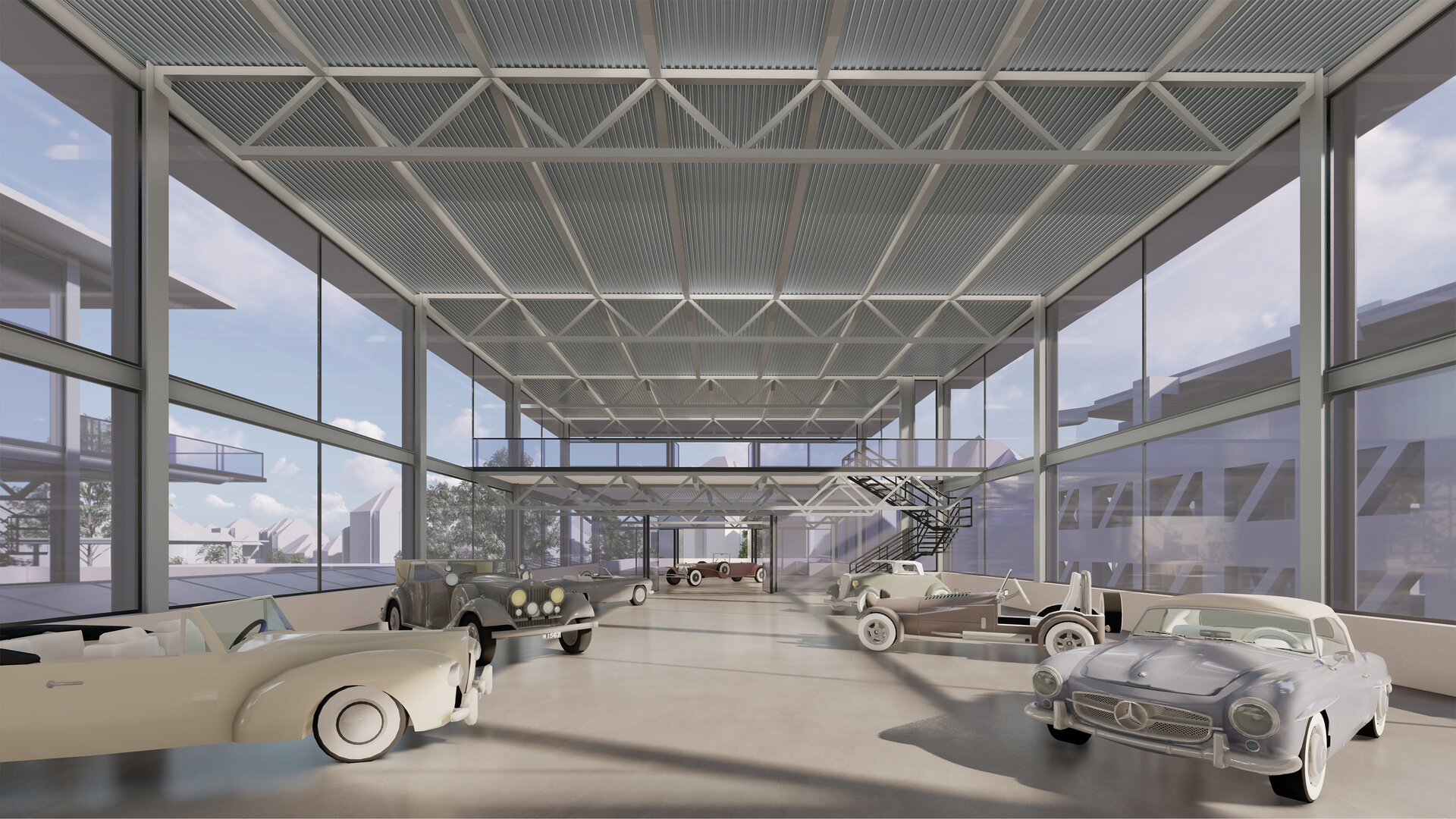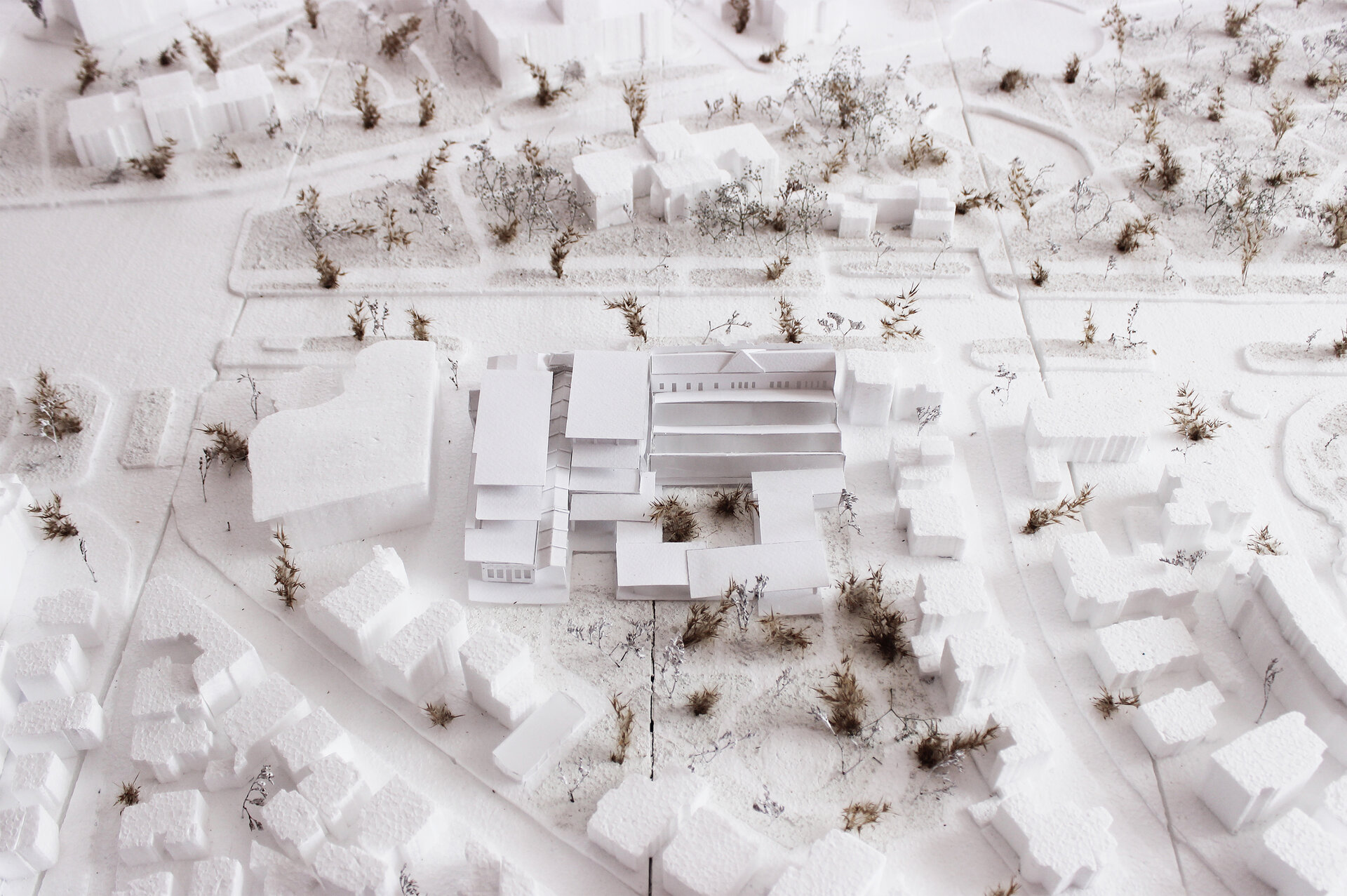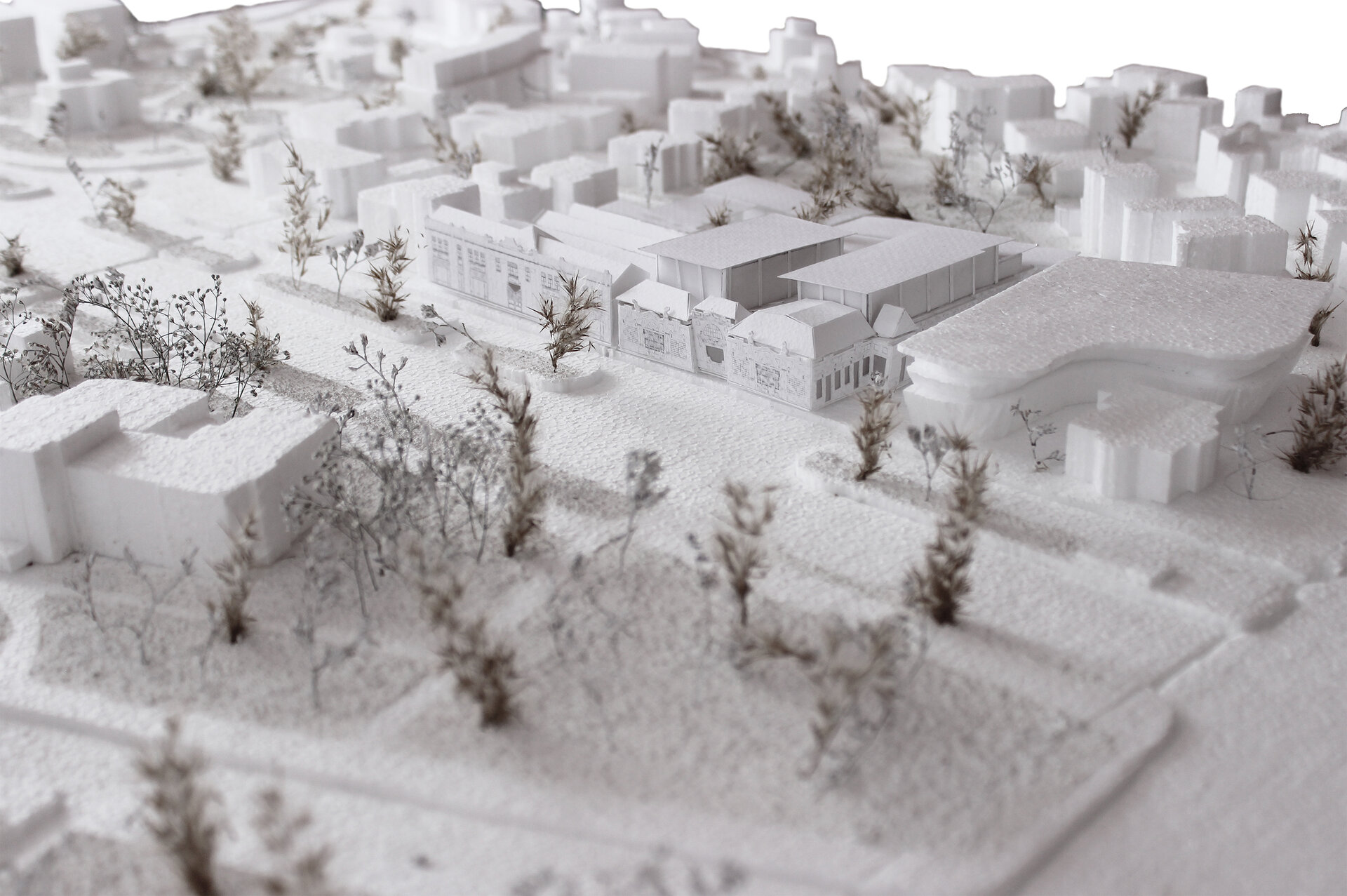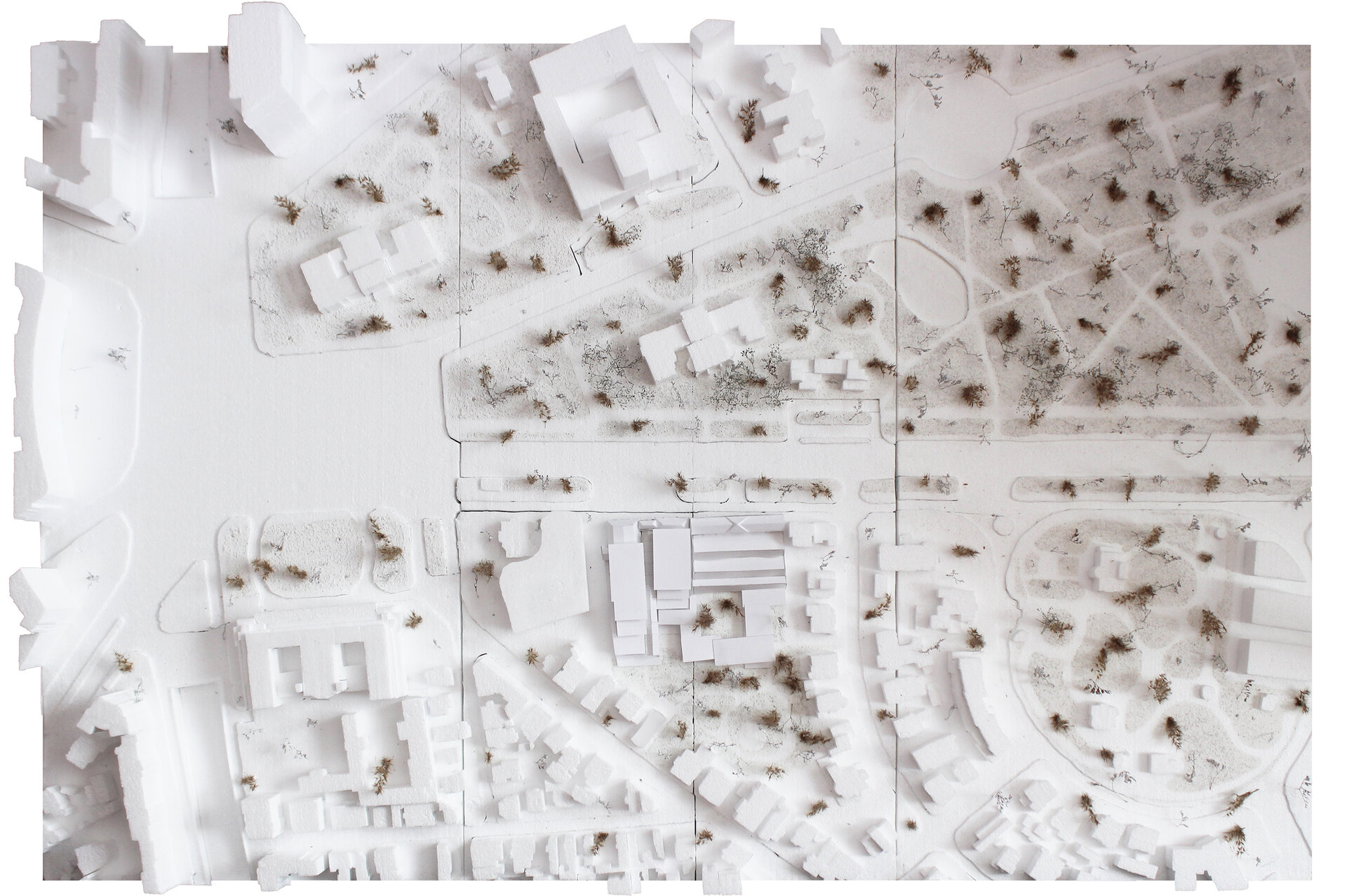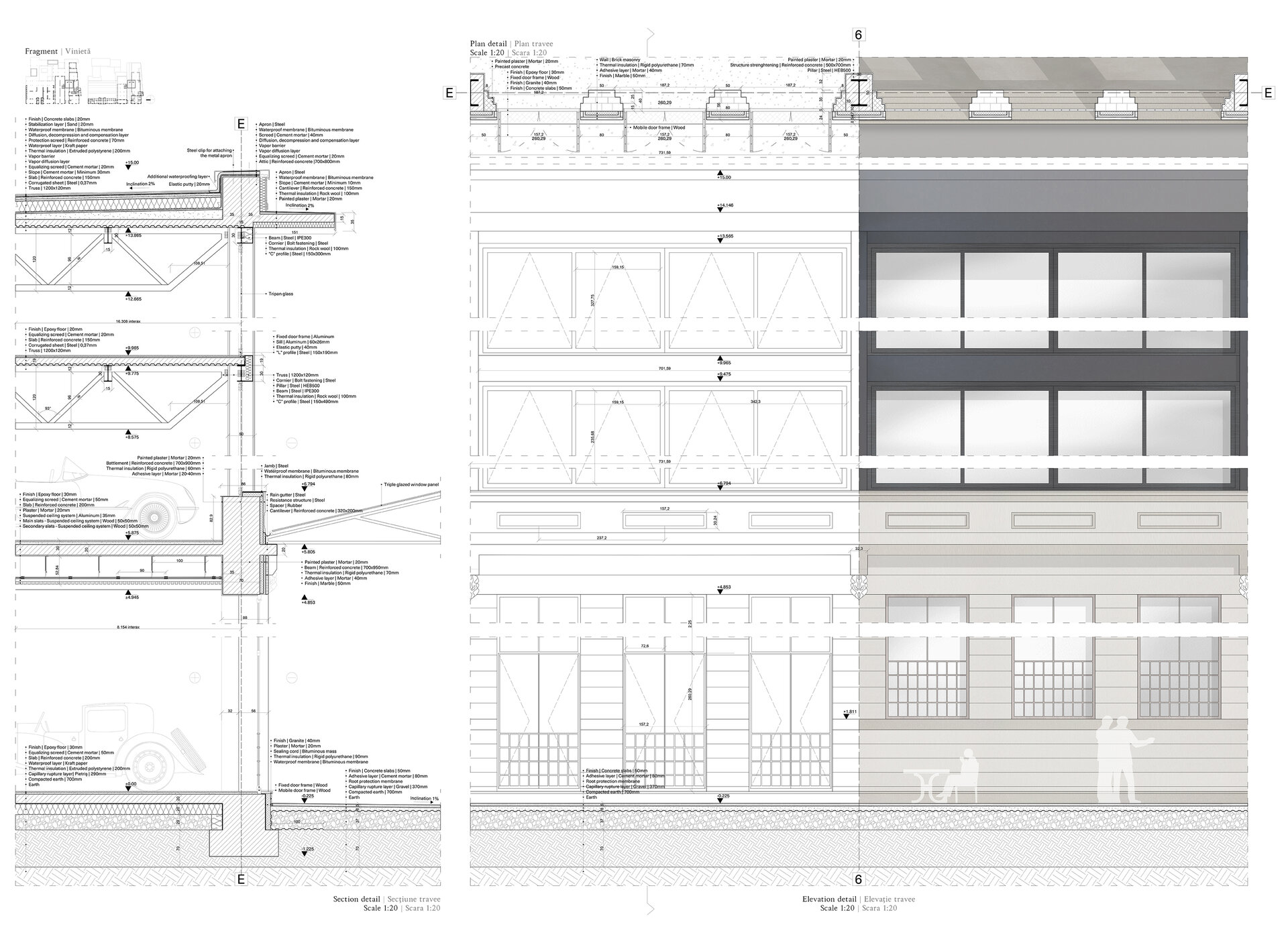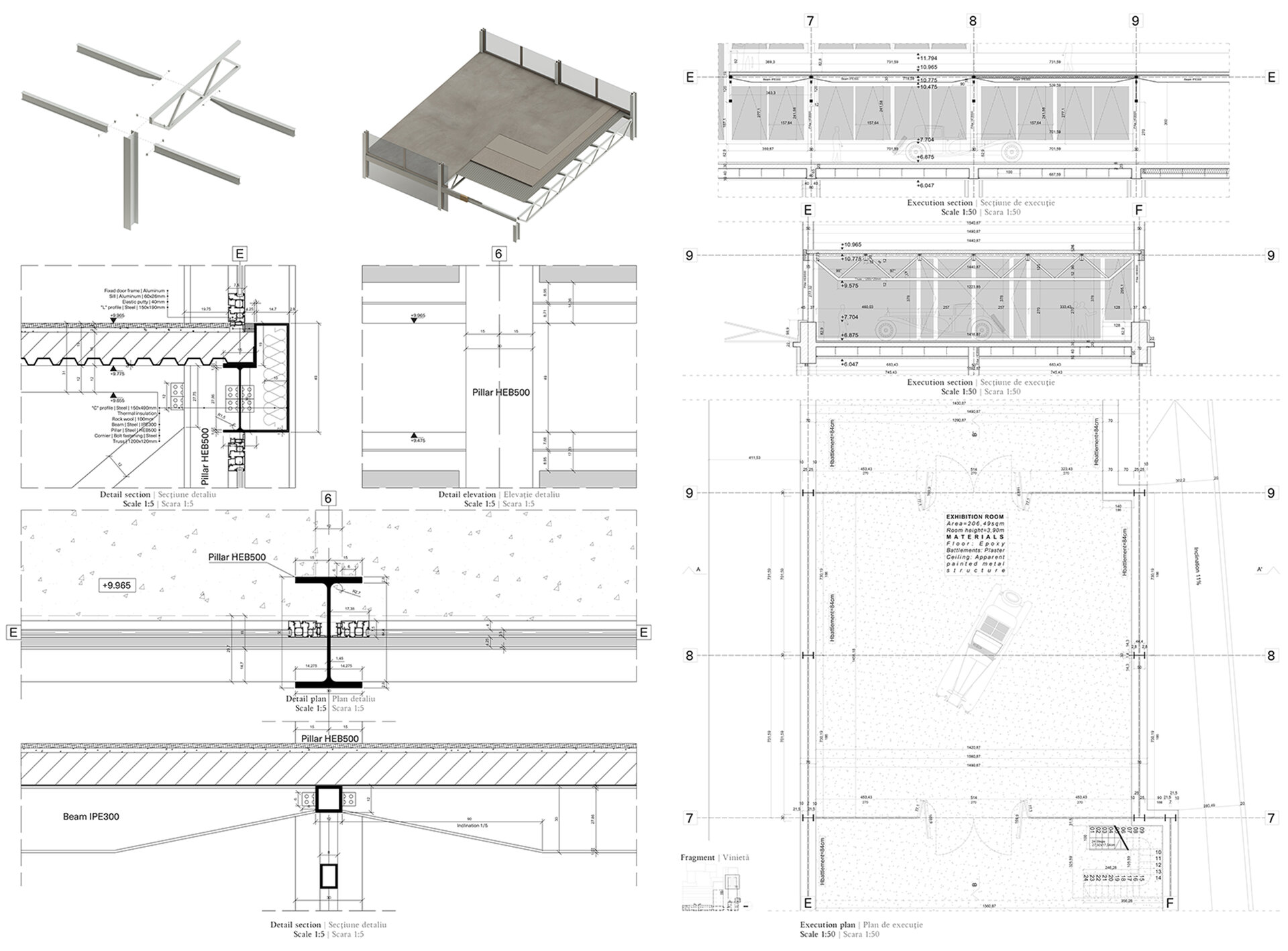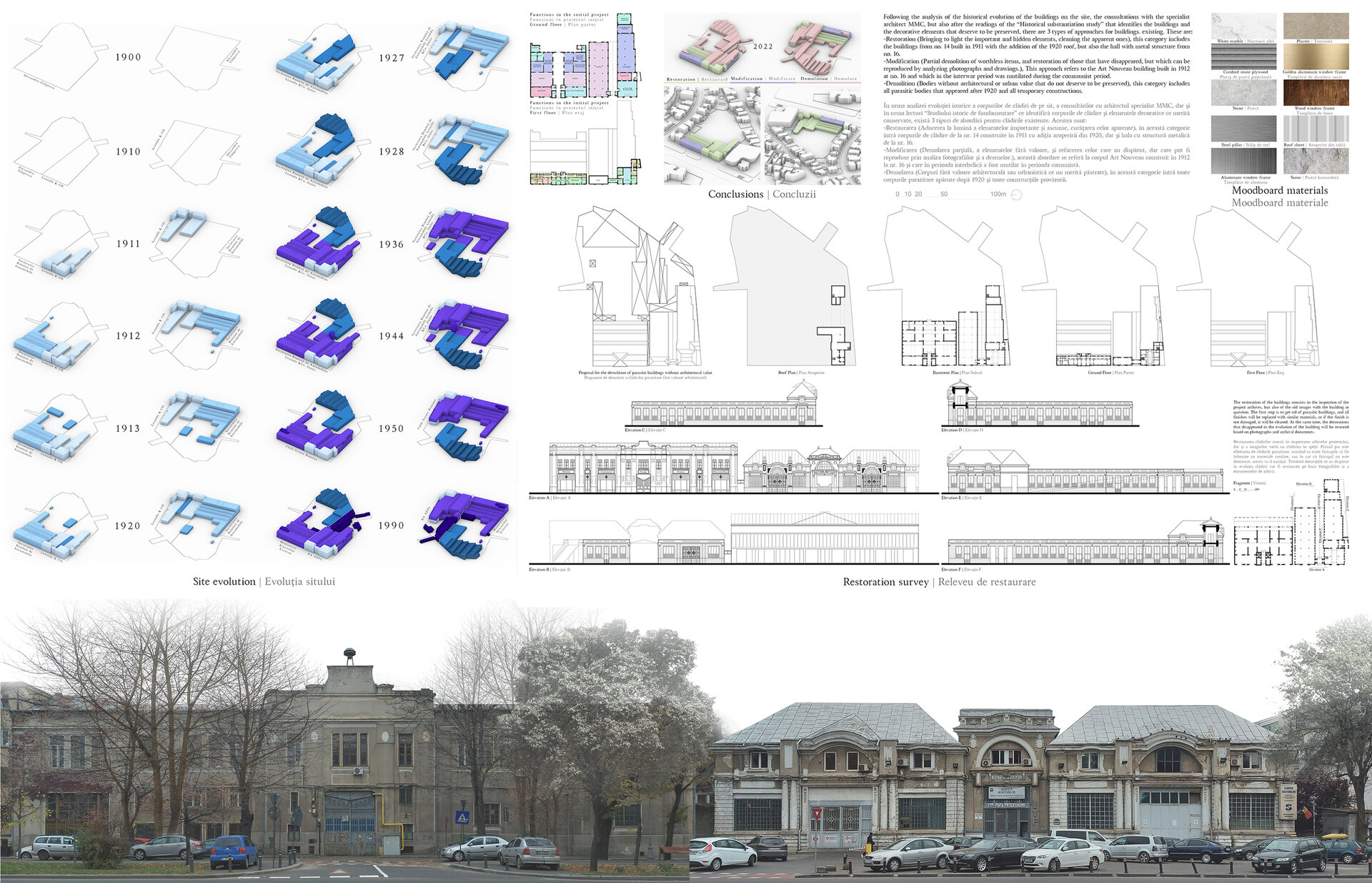
Expo pavilions in Leonida Garden
Authors’ Comment
The project explores the theme of latent spaces in Bucharest, namely those spaces that lost the initial characteristics that made them successful places of the city. Their chance is an intervention that investigates the co-presence and porosity of the site.
Porosity is an essential element, so it will be possible to find out how and where to intervene so that the place is reactivated, avoiding the impression of discordance between the new and the old "bodies".
The co-presence must be noticeable, revealing what is old, what is new and conveying visually and sensorially the story of the place.
Bucharest, Victoriei Square, a major landmark of the capital. Life swarms around the square, but not in it. If in other European cities the void attracts people to the center, here it gathers them around it, in the center living only the car.
Since the square was just a vacant lot, impressive public buildings emerged around it. In all this effervescence created around the square, a single space has been left behind in a state of latency. It can gain it at any time through an architectural gesture of reconnecting to public space and melting of the borders which it built itself in the course of time.
Leonida Garages, a place born a century ago from the passion and ambition of a single man, Leon Leonida. In addition to the entrepreneurial spirit he had, he was also an exceptional pilot, competing with big names of the era in local car competitions, founding together a car culture in Romania. His garage was the space where the newest car models from the West were brought and sold to the public, being the most cosmopolitan car hub in the country at that time.
Starting from the history of the place, I investigated how present car culture was in the Romanian society. The most relevant period was probably before the establishment of communism. During that time, Romanians won outstanding titles at international car competitions and succeeded in the engineering industry and car design.
Finally, the concept of latent space, the history of garages and car culture in Romania, the need of the context to expand public spaces and the position of the site next to three other important museums in the city directed the project towards a public cultural space, an automobile museum.
The liberation of the site from the parasite buildings was the first and most important step. Following a historical and degradation study, I established which buildings were worth preserving and capitalizing on. After the demolition of the parasites, we obtained a vast free space that brought the site to a level of occupancy suitable for its location. Thus emerged the public garden, inspired by the two historical gardens in the vicinity (Kiseleff and Filipescu Park).
To gain the park and the museum’s effervescence, it was necessary to melt the limits with the neighboring public spaces, thus freeing the site from the borders that preserved it in a latent form, giving the public the opportunity to penetrate the site through a series of "channels" that enter the site through all sides.
The museum aims to bring the car inside from the street so that it can be presented as a piece of art and technology, while giving back to people the public space lost in the last century. Leonida garages still have the chance to become again that cultural and cosmopolitan place in the city that the people of Bucharest used to know.
- Metaconnections
- Emergency center: Reintegration of the railway site C.F.R. Suceava in the contemporary circuit
- Social housing complex and Urban regeneration in the southern neighborhood
- Increasing the quality of life in a block of flats built under socialist administration - case study Soarelui neighborhood, Satu Mare
- Public intervention in the central market of Ploiești
- “Horia Bernea” School of painting
- Pinacoteca of the Anastasia Foundation - Malmaison
- Reintegration of the “Little Trianon” Palace in a contemporary circuit
- C Lab FI-LA-RET Campus-Laboratory of technological research in biomedical engineering
- Padina Mountain Center
- A church, a school, an intergenerational center
- Expo pavilions in Leonida Garden
- Apartment Building in the Protected Area no. 13, Dacia
- arhi-CULTURE. Cultural tourism in the Cave Ensamble in Buzău's Mountains
- Landscape for dance and the city. The new campus for ”Floria Capsali” School of Choreography - Rahova neighborhood, Bucharest
- Bucharest New Art Museum
- Student housing and public functions in a central protected area of Bucharest
- In between. Intermediate housing on Vaselor street, Bucharest. Vaselor Home Gardens
- Intermediate housing on Iacob Felix Entry
- Multifunctional Municipal Centre in Câmpina
- The Extension of the Folk Art Museum, Constanta
- Intergenerational learning center (eldery day care center & after-school)
- MLab-Development and Technological Transfer Center Assan's Mill
- Housing by the river
- Moara Răsărit, creative industries incubator
- Verdiales Romanian Parish Center, Malaga
- Saint Mary Institute - Library/ Foreign book study center
- Revitalizing Delfinului Food Market. A center for the community
- Antiquarium. Roman Circus of Toledo
- Revitalizing the Drăgășani wine and vine research center
